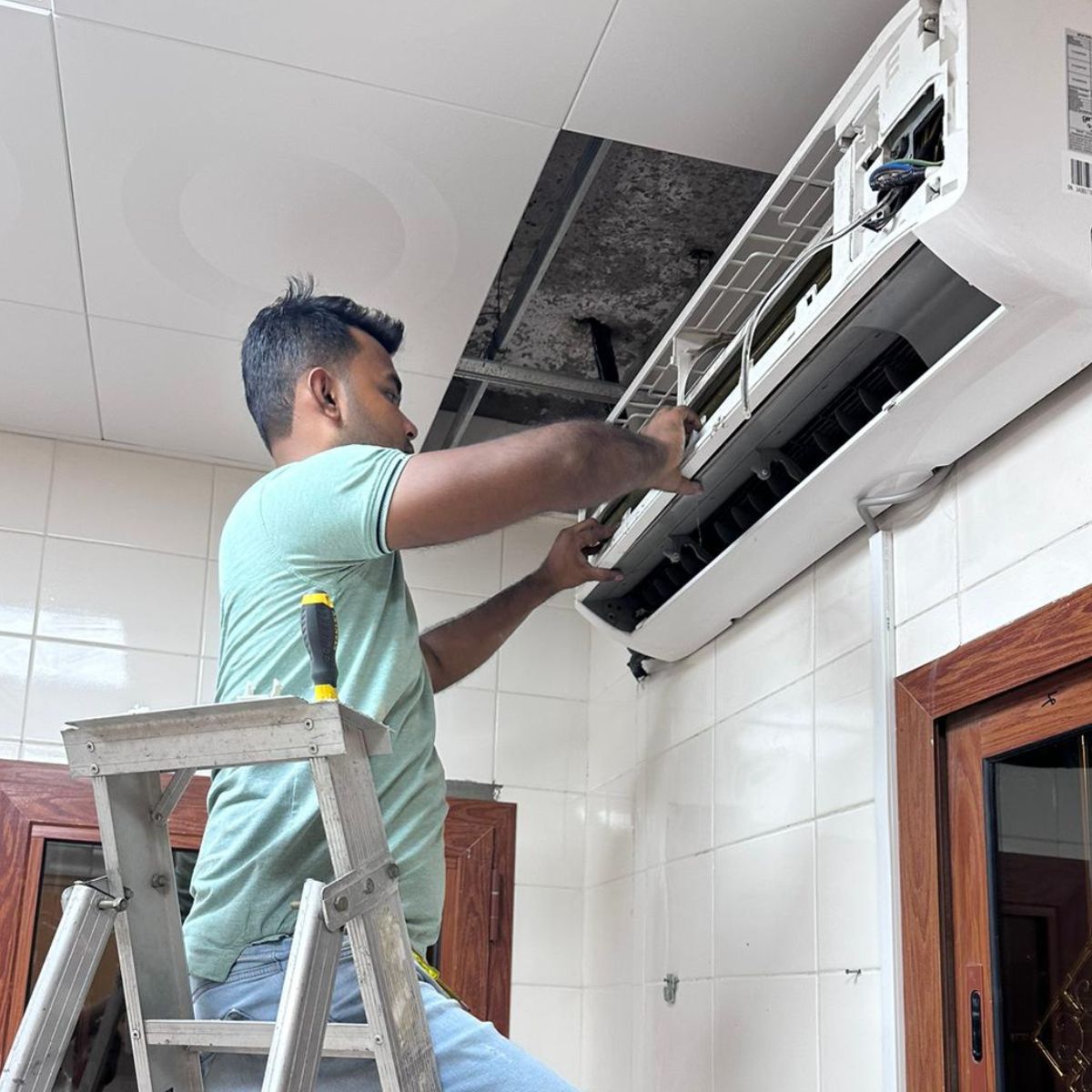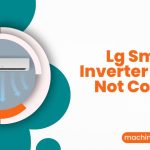Your Hisense air conditioner is filling with water. Here’s what you need to know.
An unexpected issue that can occur with a Hisense air conditioner is the unit constantly filling with water. This problem can cause a range of issues, including water damage to your home, reduced cooling efficiency, and potential health hazards from mold and bacteria growth.
We will explore some common reasons why your Hisense air conditioner may be filling with water and offer potential solutions to address the issue. By understanding the causes and finding appropriate solutions, you can ensure your Hisense air conditioner operates efficiently and without any water accumulation.
Common Causes Of Water Filling In Hisense Ac
There can be several reasons why your Hisense air conditioner keeps filling with water. One common cause is a clogged condensate drain line. Over time, dust, dirt, and debris can accumulate in the drain line, preventing proper water drainage. Another possible reason is a damaged or faulty condensate pump.
The condensate pump is responsible for pumping out the water collected in the AC unit. If it becomes damaged or stops working properly, the water may not be properly expelled. Lastly, a refrigerant leak can also lead to water filling in the AC. When there is a leak in the refrigerant lines, it can cause the evaporator coil to freeze up, resulting in excess water buildup.
Signs And Symptoms Of Water Pooling In Hisense Ac
Excessive condensation around your Hisense AC unit is one of the signs that it may be filling with water. When the temperature inside the air conditioner drops, moisture in the air condenses and forms water droplets. If you notice a significant amount of condensation, it could be an indication of a problem.
Additionally, dripping sounds or water leakage from the AC unit are also signs of water pooling. You may see water collecting around the unit or find water dripping from the vents. Moreover, reduced cooling efficiency can be a symptom of water accumulation in the air conditioner. If the AC is not effectively cooling the room despite running for a sufficient duration, it might be due to water filling up inside the unit.
Clearing The Condensate Drain Line
One common issue with Hisense air conditioners is that they keep filling with water. Fortunately, there are steps you can take to address this problem. The first step is to locate the drain line. It is typically located near the indoor unit and is connected to a drain pan. Once you have located the drain line, the next step is to unclog the line with a soft brush. Remove any debris or blockages that may be causing the water to build up. Finally, flush the line with warm water or a vinegar solution. This will help to remove any remaining debris and ensure that the drain line is clear.
Troubleshooting/replacing The Condensate Pump
If your Hisense air conditioner keeps filling with water, the problem might lie with a faulty condensate pump. To troubleshoot and replace the pump, follow these steps:
- Check for pooling water around the pump, indicating a leak.
- Inspect the pump for any visible damage or clogs.
- Listen for unusual noises coming from the pump during operation.
- Ensure that the pump is receiving power and that the circuit breaker is not tripped.
- Check the pump’s float switch to see if it is stuck or obstructed.
- Clean out any debris or blockage from the pump’s drain line.
- Test the pump’s operation by pouring water into the condensate pan and observing if it is being properly pumped out.
- Before replacing the pump, turn off the power supply to the air conditioner.
- Disconnect the old pump from the condensate line and electrical connections.
- Install the new pump, ensuring proper alignment and secure connections.
- Restore the power supply and test the new pump’s functionality.
By following these troubleshooting and replacement steps, you can address the issue of your Hisense air conditioner filling with water due to a faulty condensate pump.
Detecting And Repairing Refrigerant Leaks
If your Hisense air conditioner keeps filling with water, it could be a sign of a refrigerant leak. Look out for indicators such as reduced cooling efficiency, ice buildup on the evaporator coil, strange noises, or the air conditioner constantly running without cycling off. These signs suggest that there may be a leak in the refrigerant system.
Step 2: Locating the Leak using Detection Tools
To locate the refrigerant leak, you can use detection tools such as an electronic leak detector, ultraviolet dye, or a leak detection kit. These tools help pinpoint the exact location of the leak, making it easier for repairs.
Once you have identified the leak, it is crucial to repair it promptly to prevent further damage. Depending on the size and location of the leak, you may need to replace a damaged component, repair a leaky joint, or tighten loose fittings. Make sure to follow the manufacturer’s instructions and consult a professional if you are uncertain about the repair process.
Complex Or Hidden Issues
Having a Hisense air conditioner that keeps filling with water can be frustrating. There are a few complex or hidden issues that may be causing this problem. One possibility is damaged internal components. Over time, the internal parts of the air conditioner can wear down or break, leading to water leakage.
Another potential cause is inadequate installation. If the air conditioner was not installed properly, it may not be able to drain the condensate properly, resulting in water accumulation. To address these issues, it is essential to hire a professional technician to inspect and repair any damaged components.
Additionally, ensuring that the air conditioner is correctly installed can prevent future water filling problems. Taking these steps can help resolve the issue and ensure your Hisense air conditioner functions properly.
Contacting Hisense Customer Support
If you are experiencing issues with your Hisense air conditioner filling up with water, it is crucial to reach out to the Hisense customer support for assistance. Before making the contact, gather all the necessary product information, such as the model number and purchase details, in order to provide accurate information to the customer support representative.
To contact Hisense customer support, visit their official website and navigate to the contact us page. There, you will find the necessary contact details, including phone numbers and email addresses.
Once you have contacted Hisense customer support, follow their troubleshooting instructions carefully. They may guide you through various steps to identify the root cause of the water filling issue in your air conditioner. These troubleshooting instructions may include checking the drainage system, filters, or other components of the air conditioner.
By contacting Hisense customer support and following their troubleshooting instructions, you can address the water filling issue in your air conditioner and restore its optimal functionality.
Hiring A Professional Hvac Technician
Professional HVAC Technicians are Essential for Air Conditioner Repairs
When your Hisense air conditioner keeps filling with water, it is crucial to hire a professional HVAC technician to address the issue. Their professional expertise is invaluable in solving complex problems and ensuring your air conditioner functions optimally.
Professional HVAC technicians possess the necessary skills and knowledge to accurately diagnose and repair air conditioner issues. They have undergone extensive training and have experience in dealing with various air conditioning systems, including Hisense units. Their expertise allows them to identify the root cause of the water buildup and implement the appropriate solutions.
When seeking an HVAC technician, it is essential to conduct thorough research and choose a reliable professional. Consider checking online reviews and ratings to gauge the technician’s reputation and reliability. Additionally, ask for referrals from friends, family, or neighbors who have previously used HVAC services.
By hiring a professional, you not only ensure the proper repair of your Hisense air conditioner but also enjoy additional benefits. Professional service includes preventive maintenance, which can extend the lifespan of your unit and improve its energy efficiency. Furthermore, professionals have access to the required tools and equipment, enabling them to complete the repairs efficiently and effectively.
Regular Maintenance And Cleaning
If your Hisense air conditioner keeps filling with water, regular maintenance and cleaning are essential to prevent this issue. One important step is cleaning or replacing the air filters on a regular basis. Dirty filters can restrict airflow and cause the condensation to build up in the unit. Additionally, routine condensate drain line maintenance is crucial. Over time, the drain line can become clogged with dirt, dust, or algae, resulting in water overflow. Regularly inspect and clean the drain line to avoid this problem. Another vital maintenance task is cleaning the outdoor condenser coils. Dust, debris, and dirt can accumulate on the coils, impairing their efficiency and causing water leakage. Clean the coils using a soft brush or a vacuum cleaner to keep them in optimal condition. By following these maintenance practices, you can prevent your Hisense air conditioner from filling with water and ensure its proper functioning.
Optimizing The Ac Installation
Proper placement and clearances are essential for optimizing the installation of your Hisense air conditioner. Ensure that the unit is positioned in a location where it has sufficient space around it for proper airflow. This will help prevent overheating and enhance the overall efficiency of the AC system.
Proper insulation and sealing play a crucial role in preventing water leakage in your air conditioner. Make sure that all connections, joints, and openings are tightly sealed to keep external moisture out. Insulate the pipes and ducts to minimize condensation and potential water accumulation.
Proper ventilation is essential for preventing water buildup inside your Hisense air conditioner. Ensure that the AC unit has enough airflow around it to facilitate the evaporation of any accumulated water. Additionally, maintaining the appropriate temperature settings can help prevent condensation and excessive water formation within the unit.
Frequently Asked Questions
Why Is My Hisense Air Conditioner Filling With Water?
Your Hisense air conditioner may be filling with water due to a clogged drain line or a blocked filter, which can cause condensation to build up.
How Can I Fix My Hisense Air Conditioner If It Keeps Filling With Water?
To fix your Hisense air conditioner, start by checking and cleaning the filter regularly to ensure proper airflow. Additionally, make sure the drain line is not blocked and is allowing water to flow freely.
Can A Low Refrigerant Level Cause My Hisense Air Conditioner To Fill With Water?
Yes, a low refrigerant level in your Hisense air conditioner can result in the cooling coil becoming too cold, causing excess condensation and water buildup. It is important to have a professional inspect and recharge the refrigerant as needed.
Conclusion
To sum up, dealing with a Hisense air conditioner that keeps filling with water can be frustrating. By following the troubleshooting steps mentioned in this blog post, you can address this issue effectively: check for proper drainage, clean the filters regularly, and ensure the unit is properly installed.
Remember, routine maintenance and timely repairs go a long way in keeping your air conditioner functioning optimally and preventing water accumulation. Stay cool and comfortable!








